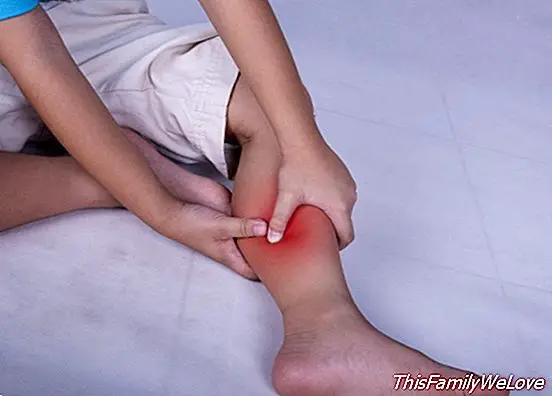Ankle sprains, how to take care of the child in this situation

Children love to laugh, jump, move, play and have fun. But with so much emotion it is likely that some problem will happen, such as a fall that causes a wound or a sharp turn that causes an injury. One of the most common is ankle sprain.
Although the child's health does not suffer for a sprain, your quality of life is lost. The need to rest and the pain caused by his ankle makes the youngest in the house adapt to this new situation. Parents should ensure that they care as much as possible for their children in these situations and ensure their welfare.
What is an ankle sprain
Ankle sprains, or sprains, are injuries that occur after a sharp turn in a child's limb. If these areas of the body are stretched too much, this is derived either in a distension, grade I sprain, or a partial tear, grade II, or a break total, grade III. As the child acquires more movement autonomy, they are more likely to suffer.
Also adolescents are more likely to suffer a sprain since in this period of time there are changes in the elasticity of their muscles. Parents should know that if their children have suffered a sprain, they are much more likely to have another in the future.
Consequences of a sprain
As stated at the beginning of the text, although a sprain does not affect health, has numerous effects on this. These situations produce pain in the ankle area and greater difficulty in walking. The discomfort not only appear when the child is moving, it can also happen that at rest they feel the ligaments being injured "cold".
Along with the pain, it is also possible that a small "package"caused by the rupture of blood vessels that is not important for the child or the severity of the sprain is greater." For the treatment of ankle sprain, the first thing to do is apply ice in the area where it has been produced and prevent the foot from touching the ground.
The total immobilization of the ankle until its recovery only responds to the sprains of grade II and III, in the first case you should only use crutches during the first 48 hours after which you can try to start walking. If the pain does not allow it, we must resume the external support of these orthopedic instruments. To treat the discomfort you can resort to some medication such as ibuprofen.
Grade I and II sprains are usually overcome in one or two weeks, while more severe ones require a longer healing time. The discomfort may continue for more days, so you do not have to take unnecessary risks. You will have to go to the doctor when warning any of the following symptom:
- Apparent deformity of the joint
- Affectation of the internal part of the ankle
- Pain in the palpable bony borders.
- Immediate impossibility to support the load of the weight of the foot itself.
- Presence of an important immediate hematoma that can guide towards the most advanced degrees of the injury, by tearing the ligaments.
Damián Montero




